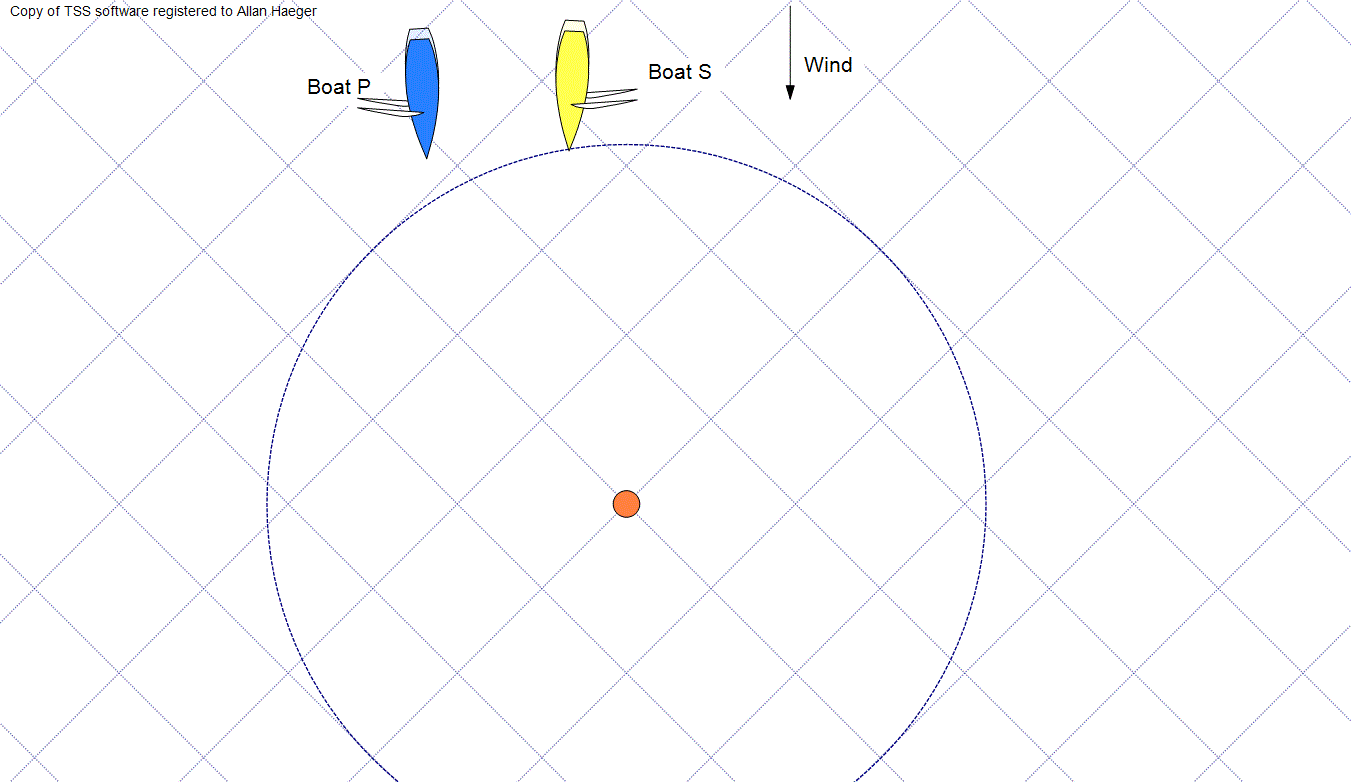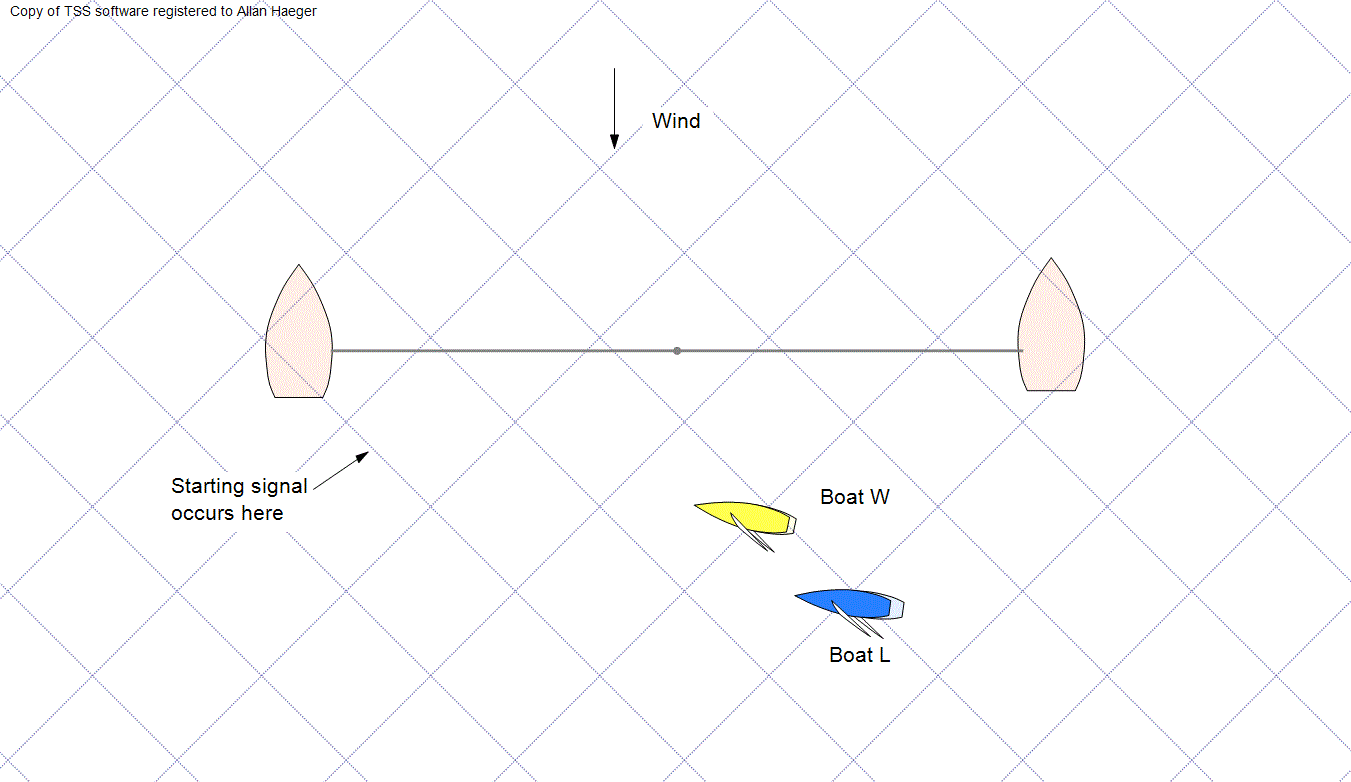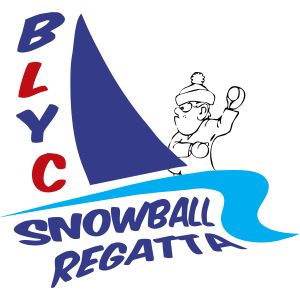Do have a sailing story, news, or helpful sailing-related information to share?
Please contact P/C Steve Harris to have it included. We’d love to hear from you.
Each week this season, we will offer a “quiz” question regarding the Racing Rules of Sailing. Read the scenario below, formulate your answer, then move your mouse over the box to reveal the correct answer. Need further explanation? This quiz was borrowed from the Inland Lake Yachting Association‘s #FairSailing initiative Excerpted from Dave Perry’s100 Best Racing Rules Quizzes, available from US Sailing. For a comprehensive explanation of the rules, read Dave Perry’s Understanding the Racing Rules of Sailing through 2024, which is also available from US Sailing. Each week this season, we will offer a “quiz” question regarding the Racing Rules of Sailing. Read the scenario below, formulate your answer, then move your mouse over the box to reveal the correct answer. Need further explanation? Boats S and P are sailing directly downwind toward a leeward mark. They had been overlapped for several lengths with S inside and slightly ahead. As S entered the zone, she luffed (headed up). As her bow became abreast of the mark, she bore away to gybe, and there was contact, but no damage or injury. Both boats protest. You are on the protest committee; which boat should be penalized? (From World Sailing Casebook, Case 75) P is penalized. S did nothing for which she can be penalized. At position 1, S reached the zone and P was required by rule 18.2(b) to give S mark-room thereafter. In addition, until S gybed P was required by rule 10 to keep clear of S. As S luffed, she was required by rule 16.1 to give P room to keep clear, and until she gybed S was also required by rule 18.4 to sail no farther from the mark than needed to sail her proper course. The mark-room that P was required to give S was the space S needed in the existing conditions to sail promptly to the mark in a seamanlike way. That space was a direct corridor from S1 to a position close to and alongside the mark on the required side. P gave S that room. However, because S had right of way she was not required to remain within that corridor; she was permitted to sail any course provided that she complied with rules 16.1 and 18.4. S luffed gradually through approximately 45 degrees while sailing about three lengths forward, and P made no effort to keep clear. Shortly before position 3, S needed to act to avoid P. At that moment P broke rule 10. When S luffed after position 2, if P had acted promptly there was space for her to have maneuvered in a seamanlike way to keep clear of S. Therefore, S did not break rule 16.1. When S gybed just after position 3, she had not sailed farther from the mark than needed to sail her proper course. Indeed, in the absence of P (the boat ‘referred to’ in the definition Proper Course), S’s proper course might well have been to sail even farther from the mark and higher than she did, so as to make a smoother, faster rounding and to avoid interference with her wind by being backwinded or blanketed by other boats ahead. Therefore, S did not break rule 18.4. Concerning rule 14, both boats broke the rule because there was contact and it was reasonable possible for each of them to avoid it. P is therefore disqualified under rule 14 as well as rule 10. However, S is exonerated because she was the right-of-way boat when the contact occurred and there was no damage or injury (see rule 14(b)). (From World Sailing Casebook, Case 75) This quiz was borrowed from the Inland Lake Yachting Association‘s #FairSailing initiative Excerpted from Dave Perry’s100 Best Racing Rules Quizzes, available from US Sailing. For a comprehensive explanation of the rules, read Dave Perry’s Understanding the Racing Rules of Sailing through 2024, which is also available from US Sailing. Each week this season, we will offer a “quiz” question regarding the Racing Rules of Sailing. Read the scenario below, formulate your answer, then move your mouse over the box to reveal the correct answer. Need further explanation? At an upwind finish, two close-hauled boats on opposite tacks (S and P) are converging at the left end mark of the finishing line. When about a length and a half from the mark, P completes a tack to leeward of S without fouling her. However, in order to pass the mark on the correct side, P luffs up to almost head to wind, thereby causing S to sail above close-hauled to avoid her. S protests P. You are on the protest committee; which boat should be penalized? (From Perry, Quiz 37) Boat P is penalized for breaking rule 18.3, Tacking the Zone. As P and S are approaching the finishing mark on opposite tacks, rule 18, Mark Room, does not apply because the boats are on opposite tacks on a beat to windward. But once P tacks, the boats are no longer on opposite tacks and rule 18 begins to apply (see rule 18.1, When Rule 18 applies). When P and S are approaching a port-hand windward mark on the opposite tack and P then passes head to wind within the zone at the mark and is fetching the mark, rule 18.3 requires P to not cause S to sail above close-hauled to avoid contact. P causes S to sail above close-hauled to avoid contact; therefore, she breaks rule 18.3 This quiz was borrowed from the Inland Lake Yachting Association‘s #FairSailing initiative Excerpted from Dave Perry’s100 Best Racing Rules Quizzes, available from US Sailing. For a comprehensive explanation of the rules, read Dave Perry’s Understanding the Racing Rules of Sailing through 2024, which is also available from US Sailing. Each week this season, we will offer a “quiz” question regarding the Racing Rules of Sailing. Read the scenario below, formulate your answer, then move your mouse over the box to reveal the correct answer. Need further explanation? Two boats, L (a leeward boat) and W (a windward boat), are approaching the left-hand end of the starting line, which is a 16-foot powerboat. When W is three lengths from the end of the line, L becomes overlapped on W to leeward from clear astern. There are six seconds to go before the starting signal. L slowly luffs and W keeps clear. As L reaches close-hauled, the starting signal is made. L is a boat length from the powerboat and will not clear it sailing close-hauled. She luffs to head to wind, shooting up and around the powerboat, and then bears away to a close-hauled course. W keeps clear throughout, and protests L for sailing above close-hauled after the starting signal. You are on the protest committee; which boat should be penalized? (From Perry, Quiz 25) Boat W’s protest is disallowed. The 16-foot powerboat ranks as both a “mark” and an “obstruction” to the 18-foot sailboats (see the definitions Mark and Obstruction). The preamble to Section C, At Marks and Obstructions, states that the rules of Section C, which include rule 18, Mark-Room, and rule 19, Room to Pass an Obstruction, do not apply “at a starting mark surrounded by navigable water.” Therefore, the situation is governed by the rules of Sections A and B. L becomes overlapped to leeward from clear astern of W. Therefore, rule 17, On the Same Tack; Proper Course, requires her to not sail above her proper course. Before the starting signal L has no proper course (see the definition Proper Course); therefore, she is free to sail up to head to wind, provided that when she changes course she gives W room to keep clear (rule 16.1, Changing Course). After the starting signal, L is required to not sail above her proper course. In this case her “proper course” (the course she would sail to finish as soon as possible) is to luff head to wind, coast past the powerboat and then bear away to a close-hauled course (see the definition Proper Course). L sails no higher than this course, and therefore does not break rule 17; and while she is changing course, L gives W room to keep clear under rule 16 .1 as demonstrated by W’s performance. W correctly keeps clear under rule 11, On the Same Tack, Overlapped This quiz was borrowed from the Inland Lake Yachting Association‘s #FairSailing initiative Excerpted from Dave Perry’s100 Best Racing Rules Quizzes, available from US Sailing. For a comprehensive explanation of the rules, read Dave Perry’s Understanding the Racing Rules of Sailing through 2024, which is also available from US Sailing.Racing Rules Weekly Quiz
something we can discuss on the porch on Sunday.
This Week’s Question
The race committee displays flag U as the preparatory signal. At the start, several boats are OCS (on the course side of the starting line) including Boat X. The race committee signals a general recall and restarts the race. Boat X starts cleanly and wins the race, but on shore her score is posted as DSQ. She requests redress. You are on the protest committee; should X be scored DSQ? (From Perry, Quiz 51)
Answer
The race committee acts improperly when it scores Boat X DSQ. Rule 30.3, U Flag Rule, states that a boat shall not be disqualified under this rule if the race is restarted (see also rule 36, Races Restarted or Resailed). Therefore, Boat X is entitled to redress, under rule 62.1(a), Redress; and it would be reasonable to reinstate her in her finishing position in the race and move the other boats down accordingly (see rule 64.2, Decisions on Redress). Furthermore, the protest committee can call a hearing, under rule 60.3(b), Right to Protest; Right to Request Redress or Rule 69 Action, to consider redress for any other boats that were improperly scored DSQ by the race committee.
Learn more at sailzing.comRacing Rules Weekly Quiz
something we can discuss on the porch on Sunday.
This Week’s Question
Answer
Learn more at sailzing.comRacing Rules Weekly Quiz
something we can discuss on the porch on Sunday.
This Week’s Question
Answer
Learn more at sailzing.comRacing Rules Weekly Quiz
something we can discuss on the porch on Sunday.
This Week’s Question
Answer
Learn more at sailzing.com

